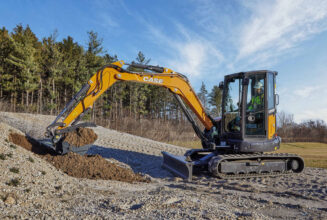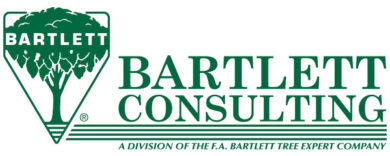Pest of the Month: Defoliating Insects
What do they look like?
Defoliating insects come in a variety of shapes, sizes and species, but they all have one thing in common – they damage trees by causing massive leaf loss or defoliation that results in loss of vigor and decline over time. Some of the most common defoliating insects include sawflies, caterpillars and webworms.
Sawflies belong to the same order of insects as wasps, bees and ants. The “stinger” or ovipositor found on female sawflies has a saw-like appearance — hence the name. Sawfly larvae look like caterpillars with a few distinct exceptions, including additional abdominal prolegs and fewer stemmata.
Caterpillars are the larval stage of moths and butterflies and are varied in appearance from size to color to having either smooth or “hairy” bodies. In addition to their true legs, they have multiple pairs of prolegs positioned throughout their abdominal segments.
Webworms are also actually caterpillars, but are specifically known for the messy, tent-like webs they leave in tree limbs. The webs serve as nests where the webworms live and feed as they grow. The webworms are usually yellow to grey, with cream-colored stripes down their sides.
Host material and range
These and other defoliating pests feed on literally thousands of species of trees worldwide.
Sawfly varieties are typically specific to their host trees, and include elm sawflies, ash sawflies, oak sawflies and pine sawflies.
Caterpillars, on the other hand, will eat from a wide variety of plant and tree species, often adapting to eat whatever is most prevalent in their current area.
Like other caterpillars, webworms will feed on basically any available leaves, especially attacking fruit and nut trees, elms, hickories, maples, willows and cottonwoods.
Current threat
The impact of defoliating insects throughout the United States is felt not only environmentally, but also economically, as the pests attack food- and crop-producing trees and plants.
Female sawflies use their saw-like ovipositor to cut into the tree or plant where they lay their eggs. Sawfly larvae then feed on the leaves by mining to eat the interior tissue, which causes galls and damage leading to massive defoliation.
Caterpillars feed solely on leaves, eating many times their weight in order to prepare for their various molting stages, culminating in pupation into adult butterflies and moths.
Although webworms have been called aesthetic threats due to the sloppy webs they leave in tree limbs, they are actually much more damaging, feeding on the upper surface of leaves and eventually eating entire leaves to the point of defoliation.
Prevention tips
Keeping trees and plants healthy with proper nutrition and water availability will increase vigor, and most healthy trees can live through minor to moderate defoliation.
Many types of insecticides can also be micro-injected or sprayed as a preventative measure — applications should be made in early spring for sawflies and summer for caterpillars and webworms.
Treatment tips
BT (Bacillus thuringiensis) is a popular and effective treatment method. BT is a bacterium that literally eats the pests’ stomach cell layer when ingested, causing infection and death. BT is usually applied by an aerial spray application.
BioForest Technologies’ TreeAzin product is an azadirachtin formulation that can be trunk injected to treat and prevent infestation. Azadirachtin is an anti-feedant and growth disruptor that has been found effective against a variety of defoliating insects.
What can you do?
Remove and destroy visible larvae (and remove webworms tents when discovered), and take care when transporting wood, plants and other tree products as they may contain larvae or eggs that can be spread.
Jesse Lee is with Epic Creative, Wis. Article provided by Mauget, a leader in micro-injection and micro-infusion tree care. Contact Mauget or visit www.Mauget.com to learn more about defoliating insects, steps taken to prevent and control them, and proper insecticide application and use.



